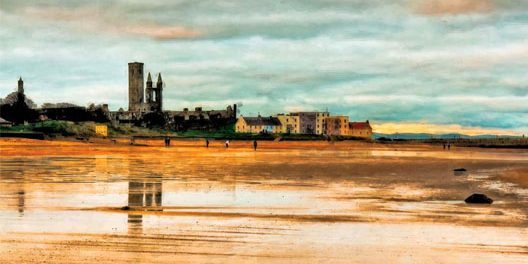The staggering financial contribution made to the Scottish economy by St Andrews University has been revealed for the first time.
Over £300 million is injected each year by the university which supports more than 9000 full-time jobs, according to an independent economic impact assessment.
The university, boasting 7400 students and 2100 staff, has more than four times as many jobs as it has staff on its payroll, as outlined in the report produced by Midlothian-based BiGGAR Economics.
The document entitled, Economic Impact of the University of St Andrews, found that for every £1 of public money invested in St Andrews, the university returns over £7.50 to the Scottish economy.
University bosses say the study shows that universities are net generators of wealth, rather than consumers of public funds.
They have warned that if investment is withdrawn from the higher education sector, the knock-on effect for the economy at large will be considerable.
The report authors looked at the impacts of core university spending, student spending, commercialisation and spin-out activity, tourism, capital projects and community projects in financial year 2008-09.
Published on the eve of a new academic year in St Andrews, the report found that students contribute £63.3 million and support 2759 full-time jobs through direct spending, part-time work and international students staying on to work.
The university raises £181.2 million annually for the local economy, directly supports 4633 jobs in St Andrews and is responsible for 59% of all employment in the town.
The famous institution receives around £40 million a year in public cash from the Scottish Funding Council but returns £305 million to the Scottish economy.
Welcoming the findings, St Andrews quaestor and factor Derek Watson, said, “At a time of increasing economic uncertainty and pressure on the public purse, we believe it is important to be able to clearly demonstrate that our universities are not just generators of vital knowledge, but wealth generators in the widest sense.Growth”Whatever HE funding solution is found for Scotland, this evidence shows that the country should continue to invest in its higher education sector if it hopes for stability and the prospect of new growth in the wider economy.
“Any notion of disinvestment in Scottish HE makes no credible economic sense.
“Put it another way limiting funding to the sector at this time will cut jobs and much needed investment far beyond the doors of our universities.
“For every pound we lose, the Scottish economy will lose seven times as much,” said Mr Watson.
“This is the first time we have attempted to quantify the monetary contribution which St Andrews University, our staff and students make to the local and national economy.Contribution”In the current debate about the future funding of HE in Scotland the impression is given that our universities are net consumers of public funds. This report shows that the opposite is true.
“Scotland’s universities are a major driver for economic success and a key plank of economic stability.”
The St Andrews study also looked at the ‘graduate premium’ the longer term effects of the university’s graduates on productivity in the economy.
The lifetime graduate premium of a single year’s cohort of graduates of the university is £5 million in the St Andrews economy and £22.7 million in the Scottish economy.
Photo courtesy of Stewart Lloyd-Jones.
